



Intercropping of grain legumes with cereals is practised in the Broye catchment area, which covers the cantons of Vaud and Fribourg in Switzerland. The area is characterised by mixed dairy and arable production in the hills and predominantly arable production in the lowlands. The area has an average annual rainfall of 865 mm, an average temperature of 9.6°C and significant agricultural activity relies on irrigation from local rivers.
Intercropping is the simultaneous cultivation of two or more crops in the same field. In this case, grain legumes (such as peas, lupins or faba beans) are grown alongside cereals (such as barley, oats or wheat). The crops are sown together in a pre-prepared mixture, usually at a ratio of 65% legumes to 35% cereals by weight, compared to the standard weight sown in monoculture (100%). The seeds are fully mixed and sown in the same row. Crops are grown over the winter and harvested simultaneously in the spring, which requires compatible combinations whose breeding is continuously optimised for simultaneous ripening. The standard practice in Switzerland is to use a cereal plus a legume.
The main purpose of intercropping grain legumes with cereals is to increase ecological resilience and improve soil fertility. Including legumes in rotations significantly improves soil nitrogen levels, reducing the need for synthetic fertilisers. Intercropping also increases water infiltration, reduces runoff and increases biodiversity. The increase in biodiversity is small in terms of the overall biodiversity of agricultural land (e.g. soil micro-organisms, pollinators). The number of crops grown remains relatively constant. The practice aims to produce higher yields on a given piece of land by using resources that would otherwise not be used by a single crop. The overall yield is higher, although land equivalent ratios (LER) were not measured in this study. However, a cited paper (Chapagain & Riseman, 2014) shows that intercropping barley with peas can increase land productivity by 12-32% compared to monoculture plots, with a 2:1 arrangement producing the highest total land outputs and LER values.
Establishing and maintaining intercropping requires several key activities and inputs: (1) Use of tractors and seed drills for planting and harvesting intercrops. (2) Regular weeding, especially in fields with crops such as soy. (3) Episodic irrigation with water from local irrigation syndicates. (4) Minimal use of fertiliser and homemade manure to maintain soil health.
Intercropping has many benefits: (1) Increases biodiversity, improves soil fertility and increases water infiltration. (2) Reduces the need for synthetic fertilisers, making it economically viable for farmers. (3) Improves drought resistance and reduces the risk of crop failure. (4) Contributes to better water management and resilience to climate change. (5) Surface erosion is reduced by the greater cover of mixed crops (leaf area index).
Farmers appreciate the effectiveness of intercropping in achieving yields similar to monocultures, while adding the benefits of cereals. They also value the reduced need for synthetic fertilisers and improved soil health. However, challenges include seed selection and segregation, particularly for crops such as wheat and faba beans, and weed management in certain fields.
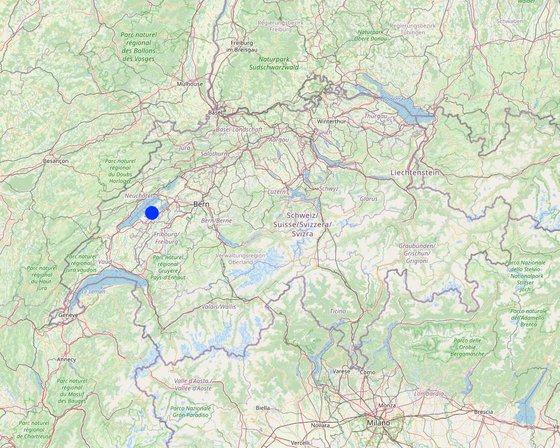
Localização: Missy / Vaud / Switzerland, Suíça
Nº de sites de tecnologia analisados: Local único
Difusão da tecnologia: Uniformemente difundida numa área
Em uma área permanentemente protegida?: Não
Data da implementação: 10-50 anos atrás
Tipo de introdução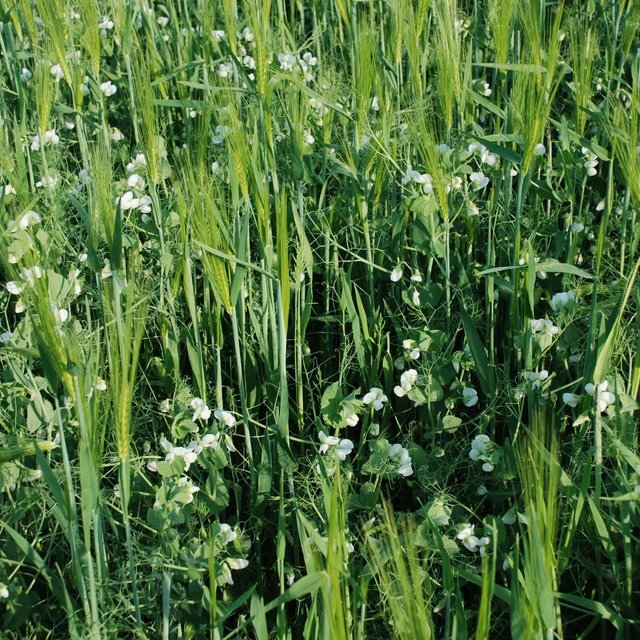
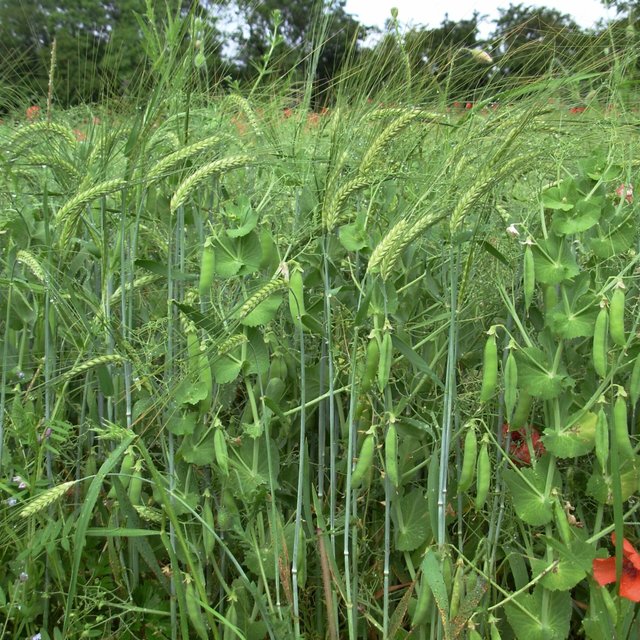



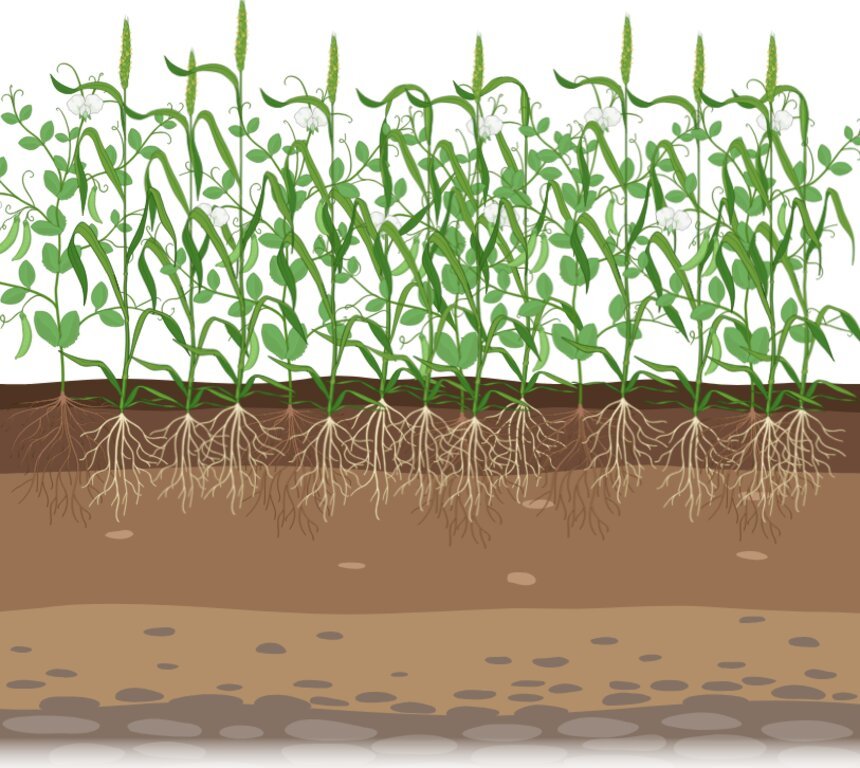
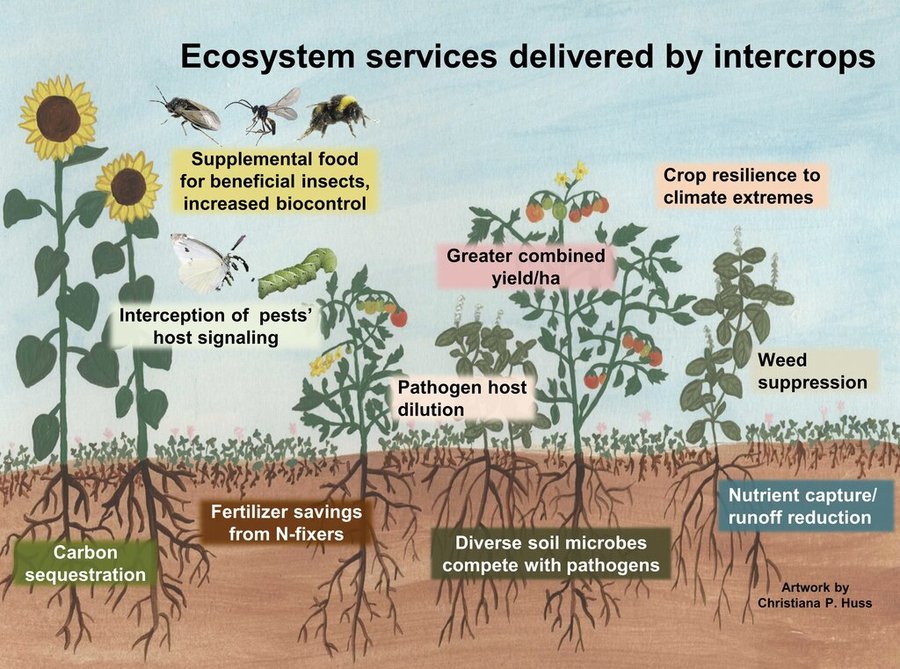
| Especifique a entrada | Unidade | Quantidade | Custos por unidade (CHF) | Custos totais por entrada (CHF) | % dos custos arcados pelos usuários da terra |
| Mão-de-obra | |||||
| Ploughing | person-days | 1,0 | 200,0 | 200,0 | 100,0 |
| Sowing the Mixture | person-days | 1,0 | 200,0 | 200,0 | 100,0 |
| Weeding | person-hours | 3,0 | 23,0 | 69,0 | 100,0 |
| Equipamento | |||||
| seeder | piece | 1,0 | 10000,0 | 10000,0 | 100,0 |
| tractor | piece | 1,0 | 30000,0 | 30000,0 | 100,0 |
| harvester | piece | 1,0 | 15000,0 | 15000,0 | 100,0 |
| plough | piece | 1,0 | 15000,0 | 15000,0 | 100,0 |
| Material vegetal | |||||
| Seed mixture protein peas / barley mixture (autumn sowing) organic | kg/ha | 200,0 | 6,0 | 1200,0 | 100,0 |
| Custos totais para a manutenção da tecnologia | 71'669.0 | ||||
| Custos totais de manutenção da Tecnologia em USD | 63'423.89 | ||||
Higher land use ratio (more biomass per hectare).
Cereals in the mixture prevent weeds from spreading within the legumes. But cereals (e.g. barley) of a lower quality than if they were grown in a monoculture.
If legumes are not growing well, fertiliser can be added and cereals can be harvested.
The same products are harvested as in a monoculture, but at the same time.
Less intervention (e.g. weeding, fertilisation) required.
Water demand remains approximately the same as in monoculture.
Reduced expenditure on organic crop protection & weeding thanks to cereals' positive effect on weed control (compared to legume monoculture).
As mixed cropping can be used within the crop rotation, it only leads to a slight increase in the farmer's income.
The same crops are cultivated as in monoculture.
Less intervention (e.g. weeding) required as cereals protect legumes from weeds and legumes provide nitrogen to cereals.
Good soil cover due to mixed cultivation slightly reduces evaporation.
Legumes fix nitrogen in the soil.
Slightly higher due to mixed species.
slightly higher because of species mixture
Slightly higher due to mixed species.
Slightly less due to weed suppression in cereals.
Legumes provide flowers for pollinators.